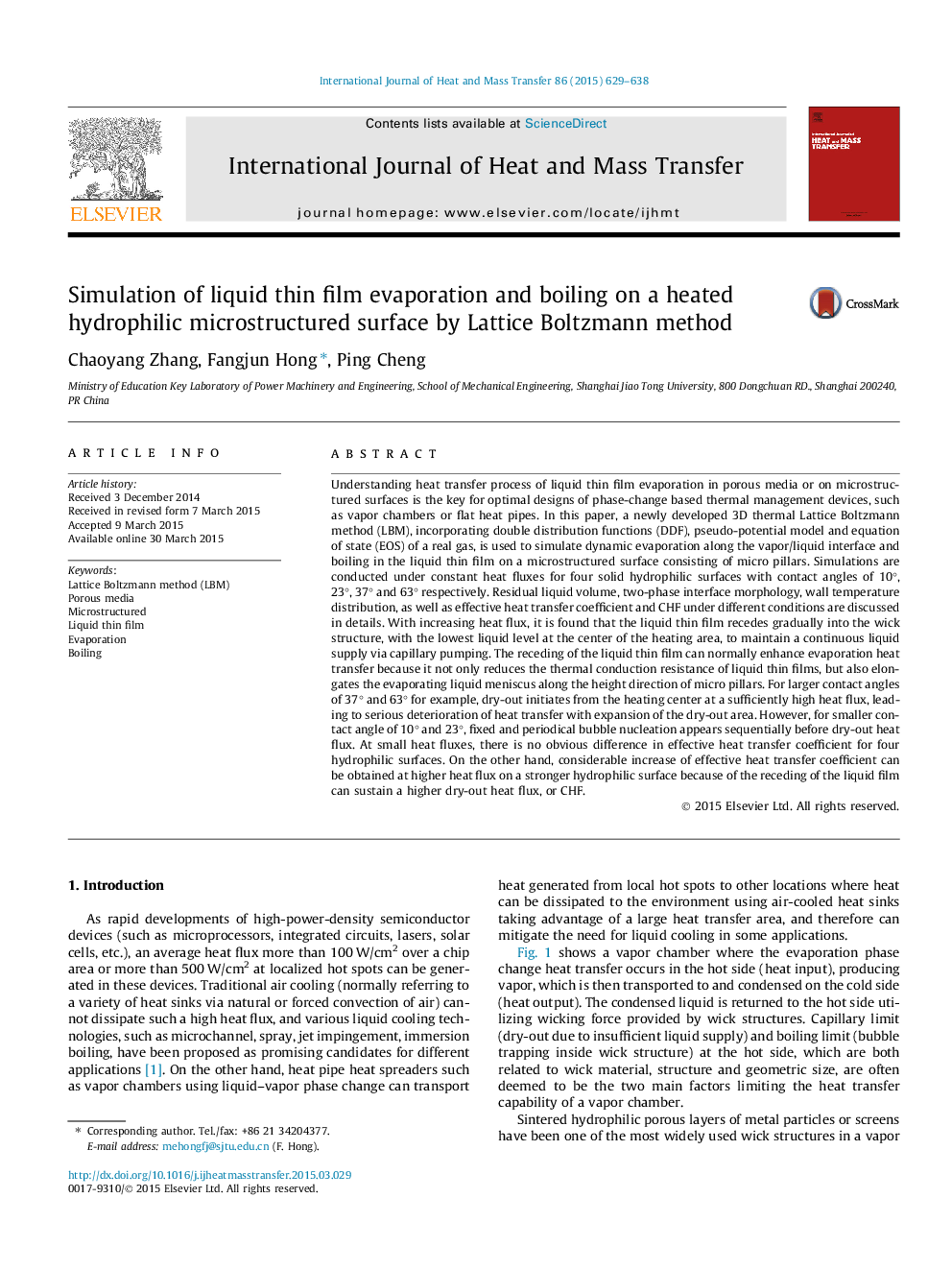| کد مقاله | کد نشریه | سال انتشار | مقاله انگلیسی | نسخه تمام متن |
|---|---|---|---|---|
| 656767 | 1458056 | 2015 | 10 صفحه PDF | دانلود رایگان |

Understanding heat transfer process of liquid thin film evaporation in porous media or on microstructured surfaces is the key for optimal designs of phase-change based thermal management devices, such as vapor chambers or flat heat pipes. In this paper, a newly developed 3D thermal Lattice Boltzmann method (LBM), incorporating double distribution functions (DDF), pseudo-potential model and equation of state (EOS) of a real gas, is used to simulate dynamic evaporation along the vapor/liquid interface and boiling in the liquid thin film on a microstructured surface consisting of micro pillars. Simulations are conducted under constant heat fluxes for four solid hydrophilic surfaces with contact angles of 10°, 23°, 37° and 63° respectively. Residual liquid volume, two-phase interface morphology, wall temperature distribution, as well as effective heat transfer coefficient and CHF under different conditions are discussed in details. With increasing heat flux, it is found that the liquid thin film recedes gradually into the wick structure, with the lowest liquid level at the center of the heating area, to maintain a continuous liquid supply via capillary pumping. The receding of the liquid thin film can normally enhance evaporation heat transfer because it not only reduces the thermal conduction resistance of liquid thin films, but also elongates the evaporating liquid meniscus along the height direction of micro pillars. For larger contact angles of 37° and 63° for example, dry-out initiates from the heating center at a sufficiently high heat flux, leading to serious deterioration of heat transfer with expansion of the dry-out area. However, for smaller contact angle of 10° and 23°, fixed and periodical bubble nucleation appears sequentially before dry-out heat flux. At small heat fluxes, there is no obvious difference in effective heat transfer coefficient for four hydrophilic surfaces. On the other hand, considerable increase of effective heat transfer coefficient can be obtained at higher heat flux on a stronger hydrophilic surface because of the receding of the liquid film can sustain a higher dry-out heat flux, or CHF.
Journal: International Journal of Heat and Mass Transfer - Volume 86, July 2015, Pages 629–638